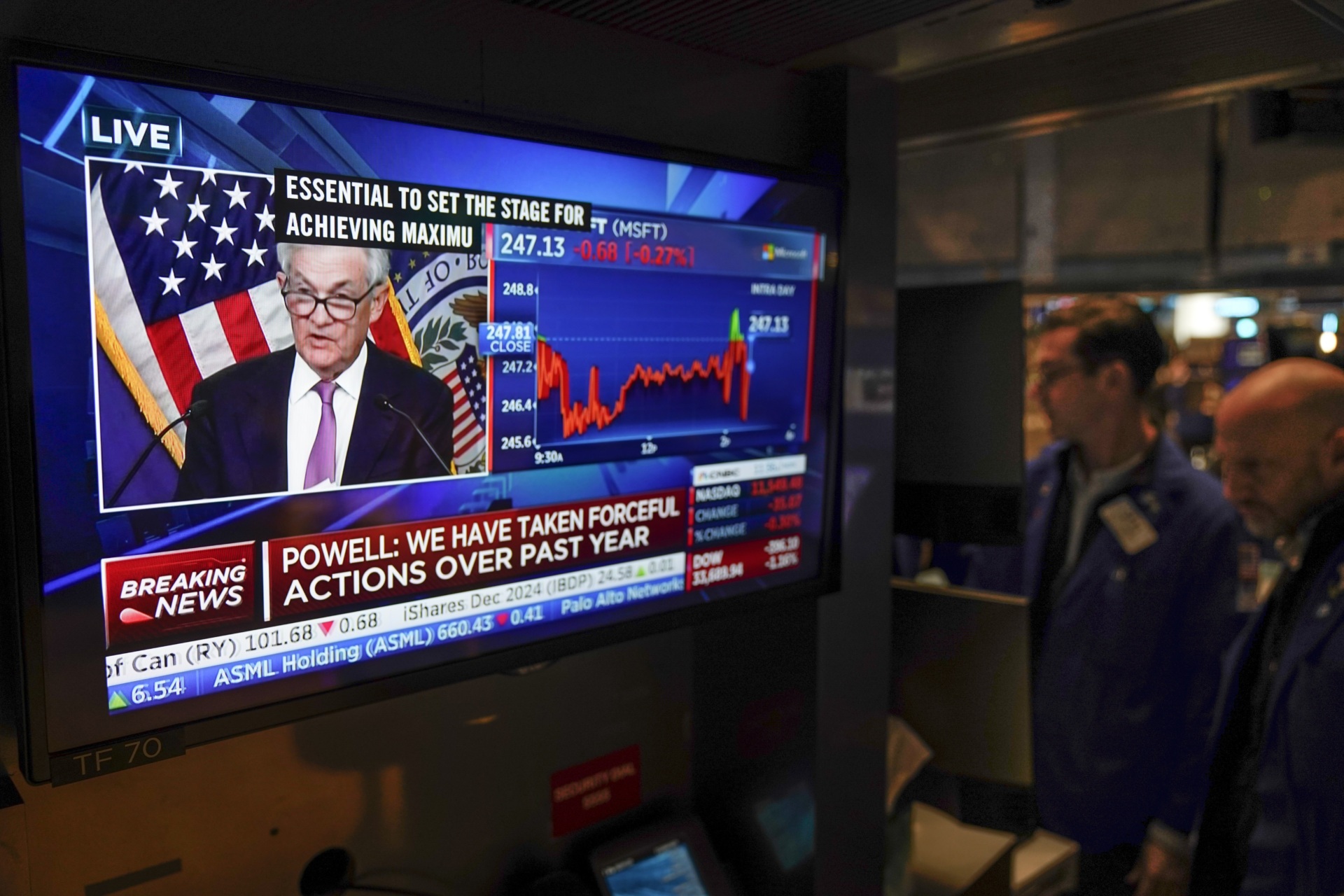Americans Are Worried About Stocks and the Economy
This might be one of the most hated stock market rallies in history. Global equities are up more than eight percent year to date. The S&P 500 has climbed seven percent. The Nasdaq Composite is up close to 14 percent. Risky speculative stocks have outperformed their peers. Shares of Carvana, for example, are up 200 percent. Shares of Tesla have climbed nearly 80 percent.
It’s not just stocks. The Wall Street Journal reports that the rally in stocks “has been accompanied by a frenzy in the options market,” indicating more gains are expected ahead. Government bonds prices are up 3.4 percent, yields down. The yield on 1o-year Treasuries has fallen by six percent. Investment grade corporate bond prices have climbed 4.5 percent.
Meanwhile, a record share of Americans polled by Gallup in January say they expect stocks to fall over the next six months. Thirty-two percent expect stocks to go down a little, and sixteen percent expect stocks to go down a lot, for a total bearish expectation of 48 percent. That is higher than any other time in which Gallup asked the question since October of 2001. So Americans are more bearish on stocks than they were in April of 2020 as we went into the pandemic lockdowns and more bearish than they were in 2007 on the eve of the financial crisis (Gallup somehow did not ask about stocks in 2008).
Americans Gloomy, Which Counts
The American public’s bearishness on stocks is accompanied by a dour view of our economic prospects over the next six months. Forty-three percent of Americans expect the rate of growth in the economy will decline, with 26 percent expecting it to decline a little and 17 percent expecting it to decline a lot. Just 36 percent say growth will accelerate, the lowest share going back to 2001. This is a record high in pessimism for this century, although we came close to it in April of 2020, when the share of Americans expecting growth to fall was at 42 percent.
Americans are not especially down about the labor market. Forty-one percent say they expect unemployment to go up this year—up from 34 percent a year ago—but that’s within the historically normal range. Twenty-nine percent say they expect unemployment to fall this year, which is on the low side of historically normal levels but looks strikingly optimistic given the fact that unemployment is 3.4 percent, and you’d have to go back to the Truman administration to find a lower level. Most of the folks who said that unemployment would rise expect only a small rise. Just 16 percent of the public expect unemployment to rise a lot.
Americans are anything but sanguine when it comes to inflation. Thirty-nine percent expect inflation to go up a lot over the next six months, the second highest level on record. The highest was a year ago, when half the public expected inflation to go up a lot. The total share expecting inflation to increase is 67 percent, which is elevated but not all that much above historically normal levels. That’s because the “up a lot” category appears to have mainly drawn share from the “up a little” and “remain the same” category. Just 12 percent say they expect inflation to remain the same, about half the usual share; and 28 percent expect a small rise, compared to a typical score in the upper-40s.
Is the Public a Contrary Indicator on Everything? History.
A brief look at the history of bullishness and bearishness on the part of the public suggests that sentiment about stocks tends to be a contrary indicator. Last year, for example, 46 percent of Americans expected stocks to go up, and 29 percent expected them to decline, with 14 percent saying stocks would go up a lot. The total return for the S&P 500 fell 18 percent—which probably counts as “a lot” in most investors’ minds—and the Nasdaq’s total return plunged 32.5 percent—definitely “a lot” in investors’ minds.

Traders on the floor at the New York Stock Exchange watch Federal Reserve Chair Jerome Powell’s news conference after the Federal Reserve interest rate announcement on Feb. 1, 2023. (AP Photo/Seth Wenig)
The public’s track record on unemployment and inflation is more mixed. Last year, for instance, the public saw inflation going up a lot when the experts on Wall Street, in the Biden administration, and at the Federal Reserve were still tell us inflation was likely to be transitory and mild. The public also got unemployment right last year and correctly predicted growth would decline. So, on the broader economic questions, the public’s views cannot be totally discounted.
Last year, the public was also right about interest rates. Seventy-eight percent said they expected interest rates to rise, with 31 percent expecting rates to rise by a lot. This was not the expectation on Wall Street at the time, so the public beat the street. This year, 74 percent expect rates to rise, with 30 percent saying they’ll rise a lot and 44 percent saying they’ll rise a little. Wall Street thinks rates will go up only slightly and get cut toward the end of the year.

COMMENTS
Please let us know if you're having issues with commenting.